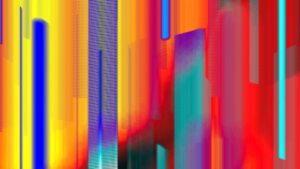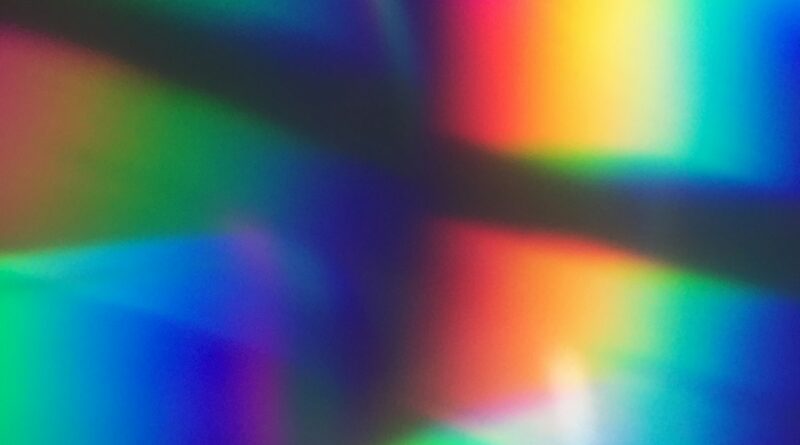Collaborative Audio Responses to an Online Collection/Archive
Collaborative Audio Responses to an Online Collection/Archive
Theresa Kneppers
I am the curator of A David Bomberg Legacy – The Sarah Rose Collection, a group of Modern British artworks by selected members of the David Bomberg and the Borough Group. In my role as the curator of the collection, I have expanded the site of curatorial production to include the Internet, and the archive of digitised material associated with the collection. One of the methods I have experimented to engage users in interpreting the digital collection is to create polyvocal audio recordings.
My work with the collection comes at a time when museums are reconsidering the role of their digital collections within their organisations. Access to the Sarah Rose collection has long been an issue, with visitors limited to viewing the gallery’s annual exhibition or even less frequently during the COVID-19 pandemic. The online collection was conceived as a solution to this access problem, but my approach took it a step further. It wasn’t just about providing digital reproductions for viewing; it was about engaging with the collection as part of a larger network.
—In this new context there could be a “making-with” dynamic between the curator, user and digital images—
Without the constraints of wall space, catalogue paragraphs or an official audio guide that dictate a singular interpretation of the image, the relationship with users could be rethought. In this new context there could be a “making-with” dynamic between the curator, user and digital images. The digitisation of museum objects and archives enable modes of co-interpretation with users beyond the what is possible physical exhibition-making.
To test these new modes of working with users I ran a series of workshops focused on creating a new audio response to the digitised collection and archive, creating new soundscapes that would then be added to the online archive. In this run of workshops audio artists, students, researchers and collaborators worked together to create a multi-voiced interpretation of the online objects. In this series of workshops, we used deep listening, embodied looking prompts and experimental audio recording techniques to create audio pieces in response to the work. The hope was to create a sense of digital intimacy, a kind of familiarity dependent on a small-scale system of communication that could take place in these types of online groups.
 An example of this type of workshop is one that I ran with multi-media artist Bill Daggs. Participants began the session with Bill Daggs by sharing anecdotes about their experiences with museum audio guides and then unconventional audio that they have encountered in museum spaces, this could be things like street level noise or live performances. The workshop attendees were very interested in Bill’s own experience working as a musician and artist, asking a lot of questions about the display and production of his artwork in different online/offline contexts. Bill spoke about his approach to sampling: in his own work he believes that nothing is really copyrighted, all files are open to be edited and sampled. He described the experience of making audio responses to the digital objects in the online collection as: “it is like we are collaborating with artists across 100 years, centuries”. One of the first exercises was to ask the participants to make and upload an audio response to one of the digital objects in the collection platform using whatever materials they had around them. One participant made a soundscape using celery and tortilla chips, the crunchiness adding a sort of static reflection of the dancer’s actions in the selected GIF. The GIF is looped video of a dancer with a work from the original painting projected on them. The result is a GIF that incorporates the offline collection as well as performance, layered with found and created audio. This new file demonstrates the ways that images can be encountered and interacted with online. The digital images can travel and be altered by a new set of users beyond the scope of the museum.
An example of this type of workshop is one that I ran with multi-media artist Bill Daggs. Participants began the session with Bill Daggs by sharing anecdotes about their experiences with museum audio guides and then unconventional audio that they have encountered in museum spaces, this could be things like street level noise or live performances. The workshop attendees were very interested in Bill’s own experience working as a musician and artist, asking a lot of questions about the display and production of his artwork in different online/offline contexts. Bill spoke about his approach to sampling: in his own work he believes that nothing is really copyrighted, all files are open to be edited and sampled. He described the experience of making audio responses to the digital objects in the online collection as: “it is like we are collaborating with artists across 100 years, centuries”. One of the first exercises was to ask the participants to make and upload an audio response to one of the digital objects in the collection platform using whatever materials they had around them. One participant made a soundscape using celery and tortilla chips, the crunchiness adding a sort of static reflection of the dancer’s actions in the selected GIF. The GIF is looped video of a dancer with a work from the original painting projected on them. The result is a GIF that incorporates the offline collection as well as performance, layered with found and created audio. This new file demonstrates the ways that images can be encountered and interacted with online. The digital images can travel and be altered by a new set of users beyond the scope of the museum.
In this workshop some participants struggled with the technical interface, the platform we were working with only accepts wav/mp3 and some users were unsure how to generate the right file format. One user, who was using an iPad, struggled to navigate across all the tabs required in the workshops moving from found sound files, Zoom to the designed platform but persisted and eventually uploaded her audio contributions. During the workshop a participant made drawings of what the audio files sounded like and then shared the digital image she took with her phone with the group. In the final exercise we selected one digital image to make a collaborative audio piece in response to. Everyone found or made a file that they thought best represented the digital object. All the files were sent to Bill Daggs and in real time he mixed and uploaded the new collaged sound. All participants minus one selected or made files that mimicked noises produced by technology, like a dial up Internet sound. The workshop ended with us listening to the co-created audio as we looked at the digital images that had inspired the polyvocal audio.
The technical interface posed challenges for some participants, indicating potential accessibility issues or a lack of clear instructions on file format requirements. This raises questions about the inclusivity of the workshop and whether adjustments could be made to accommodate participants with varying levels of technical expertise or access to specific devices. Additionally, the reliance on specific file formats limited the participation of users who may have been unfamiliar with or unable to generate wav/mp3 files. This constraint may have inadvertently excluded certain individuals from fully engaging with the workshop activities, highlighting the need for greater flexibility in the technical requirements.
Interacting and interpreting artifacts collectively involves engaging with their material, symbolic, and circulation beyond the museum framework, which significantly influences our understanding. Part of the intention of the project was to help the users understand the digital collection’s materiality, that they exist as files that can be edited and circulated as well as finding updated contextual meanings outside of the museum framework. By co-interpreting and creating novel narratives for the digital artifacts we can deepen our understanding of their significance and meanings as they circulate in new networks. Collaborative interpretation offers a dynamic format for engaging with digital artifacts, transcending traditional boundaries of who gets to create and tell the story of objects, fostering inclusive dialogue. By embracing collaboration and leveraging digital tools, we can unlock new insights and perspectives, enriching our understanding of digital cultural objects.
Cite this article in APA as: Kneppers, T. Collaborative audio responses to an online collection/archive. (2024, May 16). Information Matters, Vol. 4, Issue 5. https://informationmatters.org/2024/05/collaborative-audio-responses-to-an-online-collection-archive/
Author
-
Theresa Kneppers is the curator of A David Bomberg Legacy – The Sarah Rose Collection at London South Bank University and PhD candidate at the Centre for the Study of the Networked Image.
View all posts






